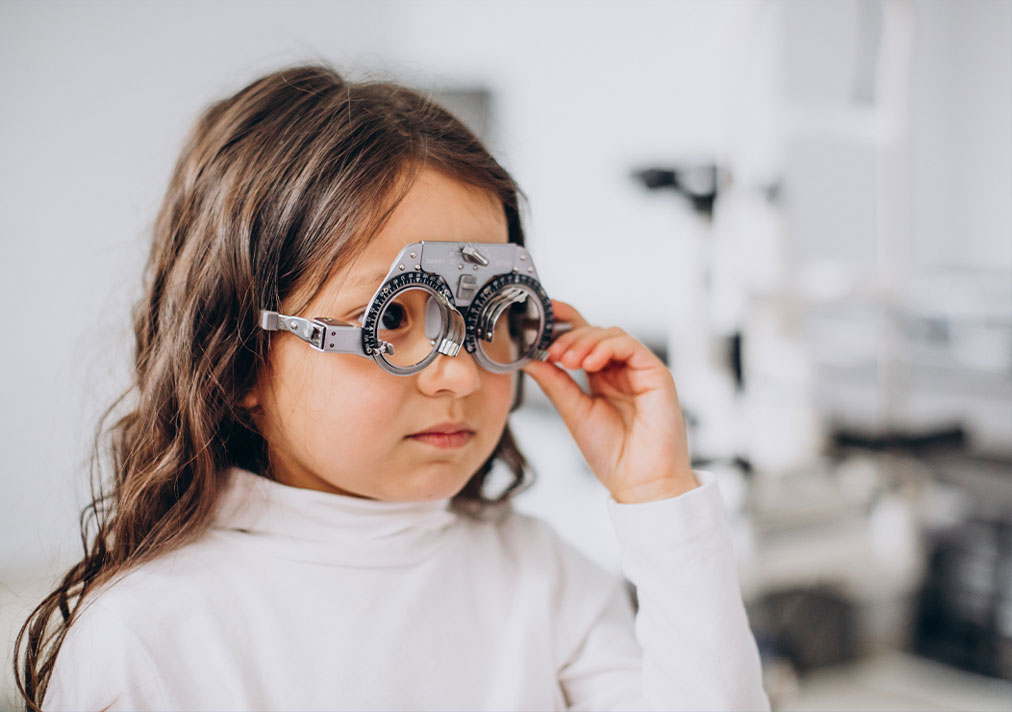Everything You Need to Know About Farsightedness: Causes and Corrective Treatment
Hyperopia, also known as farsightedness, is a common refractive error that affects both eyes, and people have to struggle to focus on nearby objects. People with Thai eye conditions have clear vision when looking at distant objects and find it difficult to see things closely. The condition develops if an individual’s eyeball is shorter than standard size or if the cornea has a flatter curvature.
This eye shape difference in an individual’s eyes restricts light rays to focus directly on the retina. It ultimately causes them to focus behind it, leading to blurry vision of objects nearby and distant objects. People with hyperopia in both eyes struggle to focus on close objects. However, it can be treated well after diagnosis through a vision test done by an ophthalmologist.
What Causes Farsightedness?
Farsightedness primarily results from the shape and size of the eye. Here are the main causes:
- Shorter Eyeball: In many cases, the eyeball is shorter than normal from front to back. This causes light to focus behind the retina instead of directly on it, leading to blurred vision for close-up tasks.
- Flat Cornea: A cornea that is too flat can also contribute to hyperopia. The cornea is the clear front surface of the eye that helps focus light. If it lacks the proper curvature, light rays may not bend correctly, resulting in difficulty focusing on nearby objects.
- Genetics: Farsightedness often runs in families. If one or both parents are farsighted, there is a higher likelihood that their children will develop the condition.
- Age-Related Changes: As people age, the lens of the eye becomes less flexible, making it harder to focus on close objects. This condition, known as presbyopia, can occur alongside hyperopia.
- Other Factors: Certain medical conditions, such as diabetes or tumors, can also lead to changes in vision, including hyperopia.
Symptoms of Farsightedness
Individuals with farsightedness may experience a variety of symptoms, including:
- Blurry Vision: Nearby objects may appear out of focus, making it challenging to read or perform close-up tasks.
- Eyestrain: Prolonged efforts to focus on near objects can lead to discomfort, burning sensations, or aching around the eyes.
- Headaches: Frequent headaches, especially after reading or doing close work, can be a sign of uncorrected hyperopia.
- Squinting: People with farsightedness often squint to see better, which can further strain the eyes.
- Difficulty with Depth Perception: Some individuals may struggle to judge distances accurately, affecting activities like driving or playing sports.
Diagnosing Farsightedness
A comprehensive eye examination by an eye care professional is essential for diagnosing farsightedness. The examination typically includes:
- Visual Acuity Test: This test measures how well you can see at various distances using an eye chart.
- Refraction Test: The doctor determines your lens prescription by using a phoropter to assess how light focuses in your eyes.
- Retinal Examination: A thorough examination of the retina helps identify any abnormalities.
- Pupil Dilation: Dilating the pupils allows the doctor to get a better view of the internal structures of the eye.
Corrective Treatments for Farsightedness
Hyperopia treatment can be corrected in many ways, improving vision clarity. There are many treatment methods:-
- Glasses
These are great, common and most convenient ways to treat hyperopia. Eye specialists will prescribe eyeglasses with positively powered lenses. These lenses help people redirect light rays so that this light can focus on the retina appropriately. These prescribed lenses compensate for this error and allow people with this condition to see nearby and distant objects fully.
- Contact lenses
These are another treatment option for hyperopia that works the same as glasses and has a specific power that ultimately enhances near vision. The best part is that the lenses are placed directly on the eye surface, giving a wider view and functioning the same as natural eye movements. The lenses provide a natural appearance and are the most preferred choice for people who do not want to wear glasses.
- Refractive surgery
It is the surgical option that is a boon to people struggling with hyperopia and helps correct the condition. Many refractive surgeries offer long-term solutions and are best for those who do not want to use glasses or contact lenses.
- LASIK refractive surgery is an effective surgical option that uses lasers to reshape the cornea and help light focus precisely on the retina. This corrects the refractive error and offers improved vision.
- Lens replacement surgery, or Clear lens exchange, is done to remove the eye’s natural lens and replace it with an IOL. This is best for those with hyperopia and issues with other eye conditions like cataracts.
- Orthokeratology
It is one of the effective non-surgical treatment options that involve wearing specifically designed gas-permeable contact lenses overnight to help reshape the cornea while sleeping and temporarily correct the error. People can remove these lenses throughout the day and which is the best part of this option. The corneas get a new shape and offer clear vision without requiring glasses or any contact lenses.
- Vision therapy
Also, vision therapy is an option for kids and is recommended to help children improve their focusing skills and alleviate their symptoms.
The best treatment option for you will be recommended by the eye doctor after evaluation of your condition and after determining the cause of the condition.
Can farsightedness cause blindness?
This is very exceptional, but Myopia or hyperopia may cause severe, vision-threatening problems, including a lazy eye or amblyopia and blindness, in very extreme cases. A timely eye examination, especially in kids with eye problems can prevent the development of such vision loss and help them see better, simply by using glasses.
Conclusion
Farsightedness is a common refractive error that can significantly impact daily life if left uncorrected. Understanding its causes, recognizing the symptoms, and seeking appropriate treatment are crucial steps in managing this condition. Regular eye examinations are essential to monitor vision changes and ensure timely corrective measures. Whether through eyeglasses, contact lenses, or surgical options, effective treatments are available to help individuals achieve clear vision and enhance their quality of life. If you suspect you have hyperopia or are experiencing any vision difficulties, consult an eye care professional for a comprehensive evaluation and personalized treatment plan.
Never ignore your eye problems and consult the best eye specialists at Eye-Q Super Speciality Eye Hospitals, if you have blurred vision, squint, or have headaches while doing close-up activities. It can be identified and fixed by a few easy tests. Treatment options are eyeglasses and contact lenses, as well as corrective surgery.




